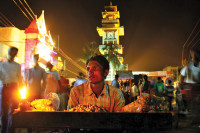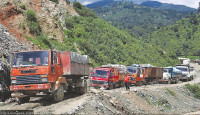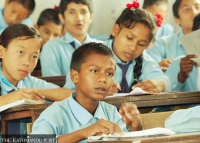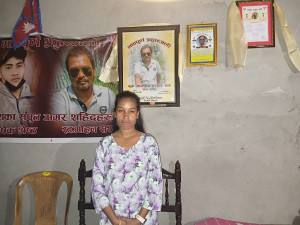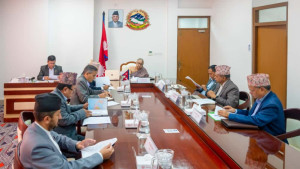Opinion
Preparing for the worse
Developing comprehensive disaster-management strategies will help us prepare better for another catastrophe
Daman Bahadur Ghale
Natural disasters often strike without any warning. Still, their worst effects can be partially prevented through preparation, use of early warning systems and swift decisive responses post-disaster. In the aftermath of the Great Quake, we need to understand that only comprehensive disaster-management strategies will help us face another catastrophe with the least possible damage to life and property.
Networks and authority
Disaster preparedness, to begin with, requires a network of disaster-related mechanisms from the central down to the lowest level to take immediate action in crises. Pakistan, for instance, has such a mechanism at the national, provincial, district and all the way down to the community level. Now, Nepal should put thought into establishing such mechanisms down to the VDC level, to ensure coordination between active volunteers and local communities when needed.
This network of mechanisms could be further strengthened by forming a high-level, independent and powerful authority with the mandate to act promptly and decisively in the time of a disaster. Here, one needs to remember that it can prove disastrous to choose between a central authority and diverse, highly localised setups. Rather, proper and effective disaster management requires a coordinated effort of both these entities. In Pakistan, the National Disaster Management Authority (NDMA) was set up shortly after the 2005 quake to implement, coordinate and monitor disaster management. This authority runs under a chairman, who is directly appointed by the prime minister. Though the Nepali government has unveiled plans to form such an entity, it needs to speed up the process of its formation to promptly relocate some settlements and also begin reconstruction.
Contingency plan
But just creating institutions is not enough. If we want our disaster-management plan to work effectively, we have to make sure that we do not miss out on certain things. First, there’s a need to avoid duplication in the chain of command. For this, the highest authority responsible for overseeing disaster management must take the lead role in coordinating different agencies directly or indirectly involved in disaster management. A practice commonly used to avoid this kind of duplication is referred to as ‘centralised coordination, decentralised action’, which implies that a single-door channel takes lead in the disaster’s aftermath to coordinate management efforts carried out by different private, public and government entities.
The Nepal Army, for example, has such a command mechanism in the form of divisions, brigades and battalions. Such a mechanism could be further strengthened in coordination with other agencies during an emergency.
Second, we need to have a contingency plan in place. Planning in advance, as part of crisis management, is the way to ensure that we are adequately prepared for difficult times. We need to make sure that we have enough food supplies, water, medicine and tents to tide over difficult times. The lack of basic essentials in rural areas, which was conspicuous in the aftermath of the recent disaster, should be a lesson learnt for all of us. Also, having disaster-management teams rehearse their moves in the form of a drill and collecting necessary information that would aid decision makers to make right decisions and think about long-term effects of their resolution could also help us a lot.
Additionally, it is also important that we made a pledge to reach out to the most vulnerable people first in the time of crisis. When disaster strikes, the poor and the oppressed people, along with those who live far from the centre, tend to suffer more. So it is imperative that we planned our contingency measures in such a way that our search, rescue and rehabilitation efforts would be directed towards them in the first place.
Preparing for the future
It is a well-known fact that Nepal falls in a seismically active region. Disasters often have a significant impact on social, economic, cultural and environmental systems. Thus, there is an urgent need to reformulate and redefine the policies related to the management of natural disasters, with emphasis on preparedness, rescue, relief and rehabilitation. Natural disasters cannot be prevented, but their effects can certainly be greatly minimised.
Despite being exposed to earthquakes many times in the past, we had never prepared ourselves for the next quake. Nepalis seem to have a peculiar tendency of forgetting the trauma of past disasters. Now that the disaster has repeated itself, we need to immediately start preparing for the next quake.
Ghale is former Major General of the Nepal Army




 16.12°C Kathmandu
16.12°C Kathmandu

